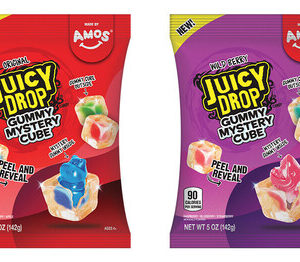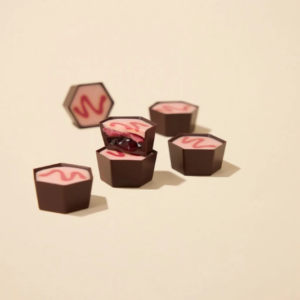Increase in automation

Confectionery Production catches up with Paul Wilkinson, business development manager, Pacepacker Services.
What is your background?
I’ve pretty much worked in this sector since leaving college. My first employer specialised in designing and manufacturing automated packing systems. I progressed through the business from factory floor, drawing office and service department to research and development. I then worked for a producer of bulk packing systems and was responsible for designing and implementing product and business systems to improve efficiency and effectiveness. I joined Pacepacker in 2005.
What is your day-to-day role?
As well as being responsible for the company’s IT and business systems, I also look after export sales. Another aspect of my job is to support PR and marketing activities, which can range from selecting the systems we are showcasing at industry shows to organising customer open days at our facility in Essex, UK. I also scope out and develop many of the automation concepts we offer. This involves meeting clients, getting under the skin of their operational challenges and adapting and testing systems to meet their specific needs. When time permits, I participate in a business coaching scheme and explore ways in which the business can expand and improve.
How important are the confectionery, chocolate, snacks and sweet bakery sectors to your business?
They are very important. This sector includes broad areas of food assembly and packing scenarios, from picking and placing chocolates into novelty boxes and packing fragile confectionery products with various contours, to bulk bagging 25kg bags of icing sugar and flour. Client requirements can be both challenging and unique. The technology is evolving all of the time. We are always mindful that clients want quality, reliable, high-spec systems that last and can be modified. Although we design our own systems in house, we also integrate parts – such as robotic arms or end effectors – from other specialists. For example, we recently began working with UPM Conveyors to integrate their High Molecular Weight Polyethene (HMWPE) food grade conveyors into our systems. The simplistic groove design of this conveyor appealed to us because it can be deployed in hygienic food processing areas, making it ideal for transporting unpackaged primary products such as sticky sweets and chocolates.
What are the major challenges within the sector?
Factory space is one of the reasons the bakery sector may have been slower to adapt. However, there are a growing number of compact automated options, which still have the capability to handle high payloads. Another factor that has concerned producers of artisan confectionery and bakery products is that robots may compromise the quality of handcrafted products. However, there are specific vacuum end effectors that are designed to handle delicate baked items, and can minimise product contact and potential damage.
How have things developed/changed within the past five years?
Along with many system integrators, we are experiencing a dramatic rise in enquiries relating to food handling robots and automation. Over the past six months we have quoted for more than 150 robot orientated projects – a 35 per cent increase on 2013 figures. The intelligence of robotics and the multiple handling capabilities of automated systems are now readily available to the food sector. While it is a well-documented fact that the UK food industry is behind its European counterparts in the uptake of robotics and automation, it is now waking up to the fact that automation makes good business sense and can increase production output and overall efficiency. The confectionery market in particular has historically been reticent to automate due to the nature and complexity of its products and stringent safety and hygiene standards. In the past 18 months, we have seen a rise in high-pressure washdown machines that are IP69K-certified, which addresses this concern.
How do you see things changing/developing over the next five years?
I believe that we’ll see increased implementation in the end of line pick, pack, place and palletising systems, in particular the handling of a broad range of products at high speed and tasks. For example, handling hot loaf tins and picking and placing rolls into retail packaging could potentially be more automated. Robots are even being used to decorate the tops of cake and biscuits, which really is the icing on the cake. HMWPE food grade conveyors will also be more widely integrated into confectionery automated systems.
What has been the biggest breakthrough in the sector over recent years?
In my view it’s the increase in handling capabilities coupled with an overall reduction in cost of automated solutions. Previously, robots were the only option for automating tasks; nowadays electro/pneumatic mechatronic devices are more commonplace and offer clients a more compact solution if suitable.
What shows and exhibitions do you feel are most important within your sector and why?
There are many, many trade shows that we could attend, but as you can imagine being present at all of them would be time and cost prohibitive. As a result, we select the PPMA Show, Total, Food Ex, as well as several smaller industry-specific exhibitions. In 2014 we also ran two open-day events, which proved to be a popular concept with existing and prospective customers.
How does the sector differ within the most important world markets?
Any food related market is fast moving and can change its product or packaging design at the drop of a hat. The global confectionery market in particular is competitive and driven by new flavours, novel ingredients and creative product development. Local brands tend to dominate in regions where manufacturers cater to consumers’ tastes. However, quality remains paramount and with the rising cost of commodities such as cocoa, any step to reduce waste during the manufacturing and packing process through the adoption of automation is a good thing.






